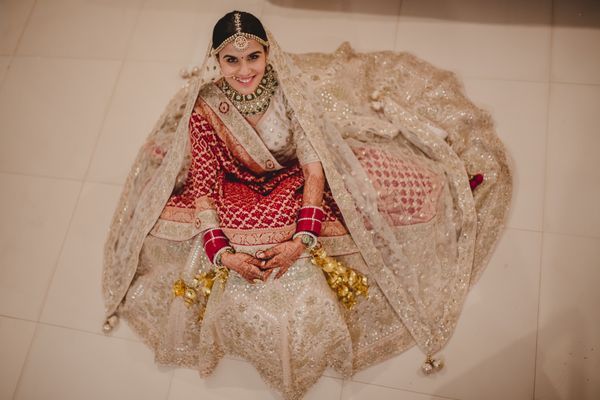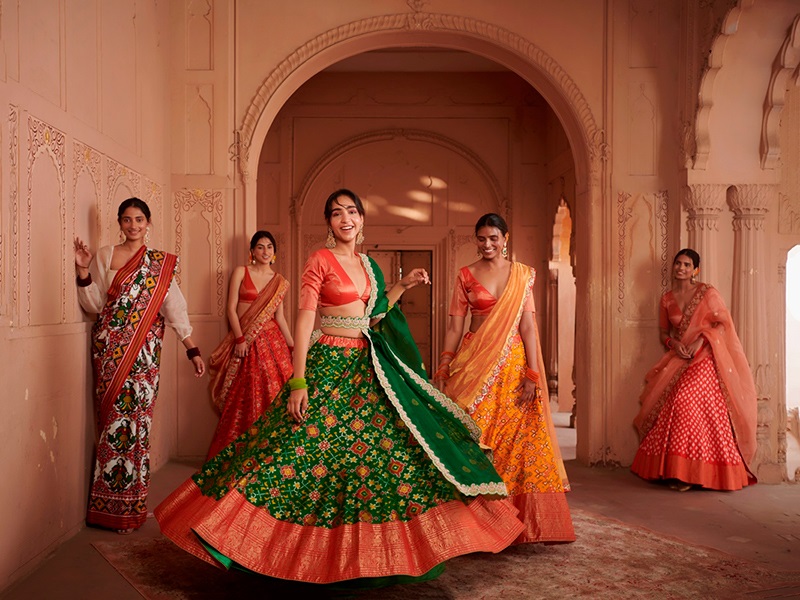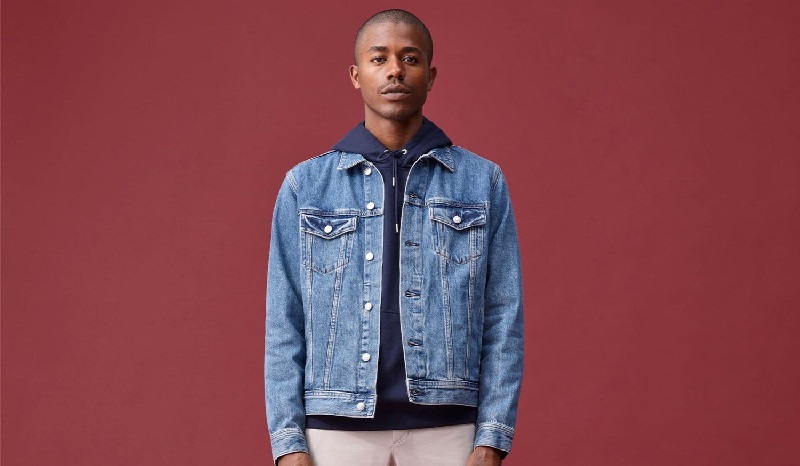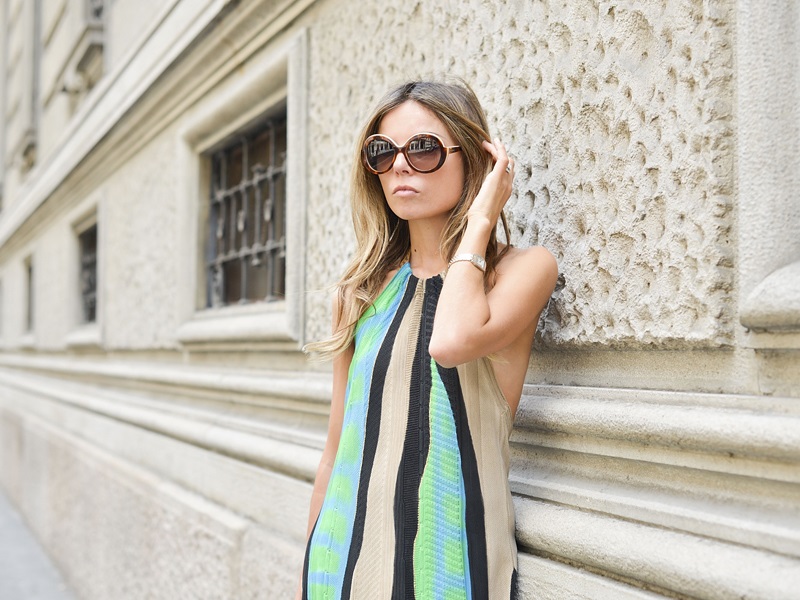In India, traditional textiles are more than just fabrics; they are woven legacies, each piece telling a story of rich heritage, artistry, and symbolism. Among the most exquisite examples are Bandhani, Banarasi, and Patola lehengas—garments that blend age-old weaving techniques with intricate detailing and cultural significance. These lehengas have long been cherished as symbols of India’s textile mastery and are treasured heirlooms that continue to inspire modern fashion. Let’s dive into the history and artistry behind each of these iconic textiles and explore what makes them timelessly beautiful.
Bandhani Lehengas: A Celebration of Color and Craft
The vibrant art of Bandhani, originating from the arid regions of Gujarat and Rajasthan, is one of India’s oldest textile traditions. The word “Bandhani” comes from the Sanskrit term bandh, meaning “to tie.” This tie-dye technique involves meticulously tying small portions of fabric and immersing it in dye, resulting in an intricate dotted pattern that unfolds once the fabric is dried and untied. Each Bandhani pattern, from the simple ekdali (single dot) to the more complex jaaldar (netted) designs, represents a level of craftsmanship honed over centuries.
Bandhani lehengas are typically adorned with vibrant colors like red, yellow, and maroon, with each hue carrying a symbolic meaning. Red, for instance, is associated with weddings and love, making it a popular choice for bridal lehengas, while yellow represents joy and prosperity. Traditionally worn during festivals, ceremonies, and weddings, Bandhani lehengas are not just garments but symbols of cultural heritage and good fortune. Today, designers incorporate Bandhani into contemporary lehenga designs, blending traditional patterns with modern cuts and silhouettes, making it a beloved choice among brides and fashion enthusiasts alike.
Banarasi Lehengas: The Royal Weave of Varanasi
Banarasi lehengas, known for their opulent textures and intricate motifs, originate from the historic city of Varanasi, formerly known as Benares. The art of weaving Banarasi silk dates back to the Mughal era when artisans, influenced by Persian aesthetics, began incorporating intricate floral and foliate motifs, jali (net) patterns, and Mughal-inspired designs into the fabric. Banarasi silk was highly prized for its luxurious feel and became a symbol of royalty and aristocracy, often adorned by nobility and bridal trousseaus.
Banarasi lehengas are crafted from pure silk and feature brocade patterns woven with gold or silver zari (metallic thread), making each piece an elaborate work of art. Creating a Banarasi lehenga is a labor-intensive process, often taking weeks or even months to complete, depending on the intricacy of the design. Skilled weavers painstakingly bring these patterns to life, incorporating traditional motifs like butis (small flower or geometric shapes), paisleys, and jaals. These lehengas are highly sought after for weddings and special occasions, as their resplendent appearance and timeless appeal bring a regal elegance to any celebration. In contemporary fashion, designers are experimenting with Banarasi lehengas in pastel colors, unconventional patterns, and lightweight silks, making them more versatile and appealing to modern brides.

Patola Lehengas: A Marvel of Double Ikat Weaving
Patola lehengas originate from Patan, Gujarat, and are renowned for their double ikat weaving technique—a process so complex that it has earned Patola fabric a place among the rarest and most labor-intensive textiles in the world. Double ikat involves meticulously dyeing the threads in precise patterns before weaving, ensuring that the design aligns perfectly. This method requires incredible precision and expertise, and as a result, a single Patola lehenga can take months to complete.
The motifs in Patola lehengas often feature traditional symbols like elephants, parrots, flowers, and geometric patterns. These designs carry deep-rooted meanings; for example, elephants represent strength and prosperity, while parrots signify love and passion. Originally reserved for the nobility, Patola fabric was a luxury that only the elite could afford. However, today, it has gained widespread recognition and admiration, with designers adapting the traditional motifs and intricate detailing of Patola into modern lehenga designs. The result is a vibrant garment that not only captures the beauty of Gujarati craftsmanship but also serves as a symbol of heritage and exclusivity.
The Modern-Day Appeal: Reviving Tradition with Contemporary Flair
As the global fashion landscape leans towards sustainable and artisanal clothing, these traditional lehengas are experiencing a resurgence in popularity. The rich heritage of Bandhani, Banarasi, and Patola lehengas resonates with individuals who seek authenticity, sustainability, and craftsmanship in their clothing. In recent years, designers have reinterpreted these traditional styles, blending heritage with innovation. Contemporary versions of these lehengas come in diverse cuts, pastel shades, fusion styles, and minimalist patterns, making them more versatile and suited to the tastes of today’s consumers.
Additionally, social media and the rise of fashion influencers have given these traditional lehengas new exposure, as brides and celebrities alike celebrate their cultural roots through these timeless textiles. Whether it’s a classic red Bandhani lehenga, a luxurious Banarasi lehenga, or a vibrant Patola lehenga, these garments have become popular choices not only for weddings but also for festive occasions and other celebrations, symbolizing a connection to heritage and tradition.
Why These Lehengas Endure: The Essence of Indian Textile Heritage
Bandhani, Banarasi, and Patola lehengas are more than just stunning pieces of clothing; they embody the essence of India’s textile heritage. Each piece is a culmination of centuries of expertise, cultural symbolism, and dedication. When wearing these lehengas, one isn’t simply donning a garment but embracing a piece of history and artistry that has been passed down through generations.
In a world where fast fashion often dominates, these lehengas remind us of the beauty of slow, hand-crafted fashion. Their enduring appeal lies not only in their intricate designs and vibrant colors but also in their stories—the weavers’ hands, the families who have kept the traditions alive, and the cultural meanings woven into each thread.
Embracing Tradition: A Fashion Statement with Heart and History
As we continue to see the revival of traditional textiles in modern fashion, Bandhani, Banarasi, and Patola lehengas will undoubtedly hold their place as timeless treasures. Each of these lehengas offers a distinct beauty that resonates deeply with the Indian ethos, serving as a testament to the artistry, resilience, and heritage of Indian textiles. Whether for a wedding, a festival, or simply as a way to honor one’s roots, wearing these lehengas is a celebration of the enduring legacy of Indian craftsmanship, bringing together tradition and trend in perfect harmony.
In the realm of fashion, these lehengas stand as a bridge between past and present, making them not just garments, but cherished symbols of India’s rich cultural tapestry.





